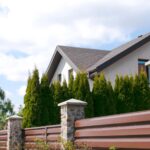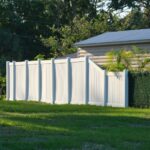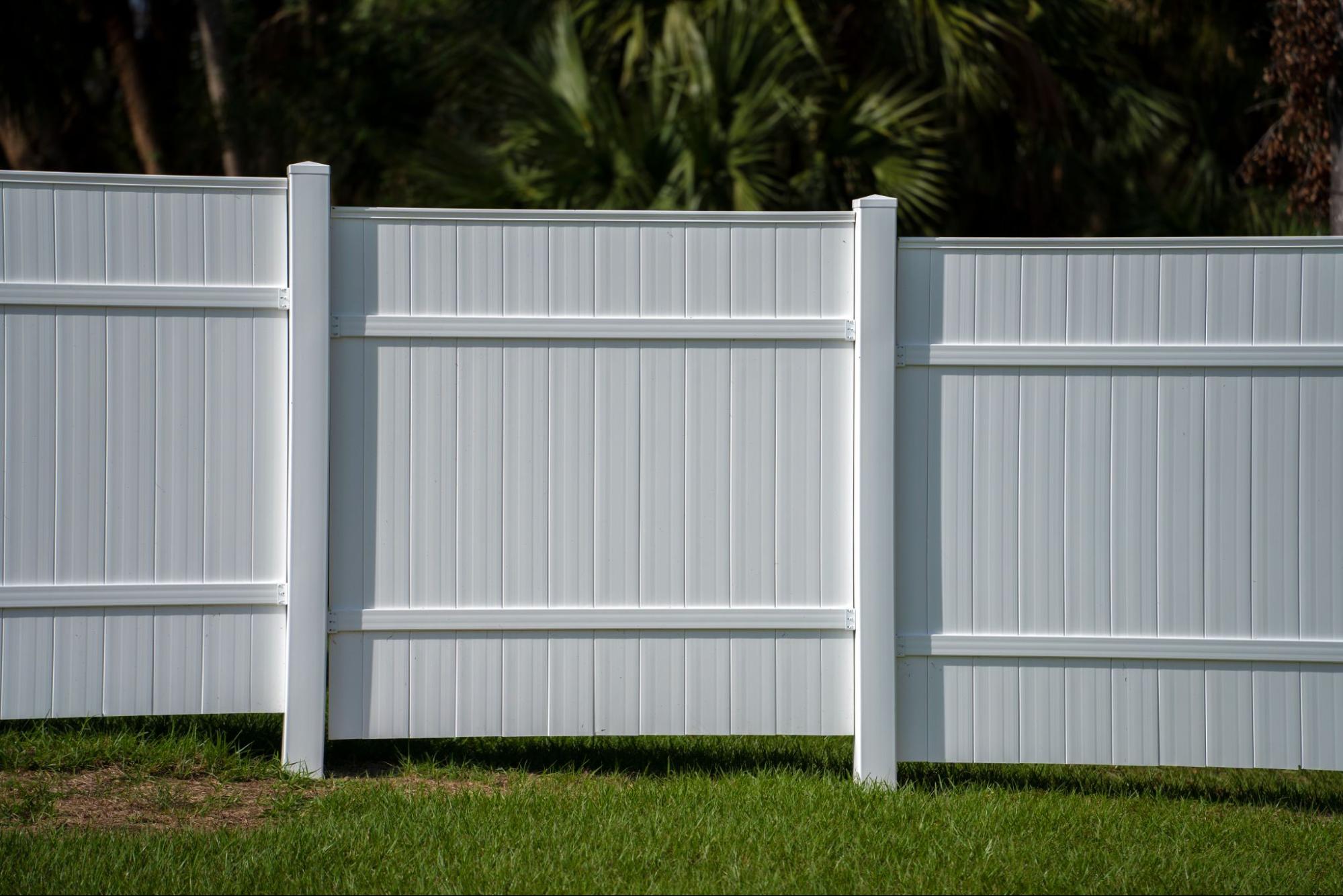
What Are the Best Fencing Styles for Modern Homes?
Modern homes are more than just clean lines and open plans. They reflect lifestyle choices, values, and a desire to strike a balance between design and function. Fencing, once an afterthought, is now a defining feature of curb appeal. It influences privacy, security, and the home’s connection to its surroundings. Choosing the right fence means thinking beyond the boundary line.
Why Fencing Styles Matter
The fence is one of the first things people see. It can quietly elevate a home or completely clash with it. More than appearance, style affects privacy, airflow, safety, and maintenance. Choosing the right fencing style shapes how the space feels and functions every day.
Fencing Reflects Architecture and Personality
The best fences aren’t just practical; they speak your design language. A modern slat fence complements flat-roofed homes, while bold steel panels suit edgy industrial builds. Even color choices can echo the tones of your façade or trim. This connection makes your entire property feel intentional and cohesive. Additionally, a thoughtful fence shows care, creativity, and personal taste.
Fencing Influences How You Use Outdoor Space
Fencing style affects how a yard feels: open, private, structured, or relaxed. Tall vertical panels can make a small yard feel cozy and enclosed. Airy designs encourage light, movement, and connection to surroundings. Kids and pets are safer with closed fencing, while entertainers may prefer partial views. Similarly, your choice should support how you use your space rather than limiting it.
Best Modern Fencing Styles for Today’s Homes
Fencing is no longer just about marking territory. It’s part of the home’s design language. A well-chosen fence reflects lifestyle, function, and personal style. The following styles meet the needs of modern living. Each option offers a blend of visual appeal, durability, and purpose.
Fencing for Curb Appeal and Functionality
Modern homes thrive on cohesion. The fence should belong to the rest of the design. A mismatched or outdated style can throw everything off. A well-chosen fence should both protect and add visual harmony.
Contemporary Horizontal Slat Fencing
This style is a favorite in modern neighborhoods. It features wide or narrow horizontal boards placed with clean spacing. Materials range from stained wood to powder-coated metal or composite—the sleek design pairs perfectly with minimalist landscaping and flat-roof homes. Additionally, the slight gaps between slats allow airflow without compromising privacy.
Vertical Board Fencing With Modern Touches
This fence style, a twist on a classic, suits transitional or modern-traditional homes. Vertical boards create strong, clean lines and provide full coverage. Updates can be achieved by using charred cedar, black-stained pine, or metal post accents. Homeowners can add a cap or horizontal trim for flair. Similarly, it allows height without the harshness of concrete or stone.
Smart Privacy Fencing for Urban Living
Urban homeowners face distinct challenges. Space is tighter, and neighbors are closer. A good fence can make even a small yard feel private and personal. It should also reduce noise and withstand daily wear and tear.
Composite Fencing for Low-Maintenance Privacy
Composite fences are perfect for modern city living. They look like natural wood but require no sanding, staining, or painting. Many brands offer rich color tones that never fade. These panels are ideal for narrow spaces, as they are installed cleanly with minimal hardware. Additionally, they resist insects, rot, and warping over time.
Metal Panel Fencing With Integrated Screens
This option blends durability with modern design. Corrugated metal panels or flat aluminum sheets create a solid barrier. Add laser-cut screens or panels with geometric cut-outs to bring life to plain metal. These screens provide ventilation while maintaining the views. Pairing metal with plants or wood further softens the look.
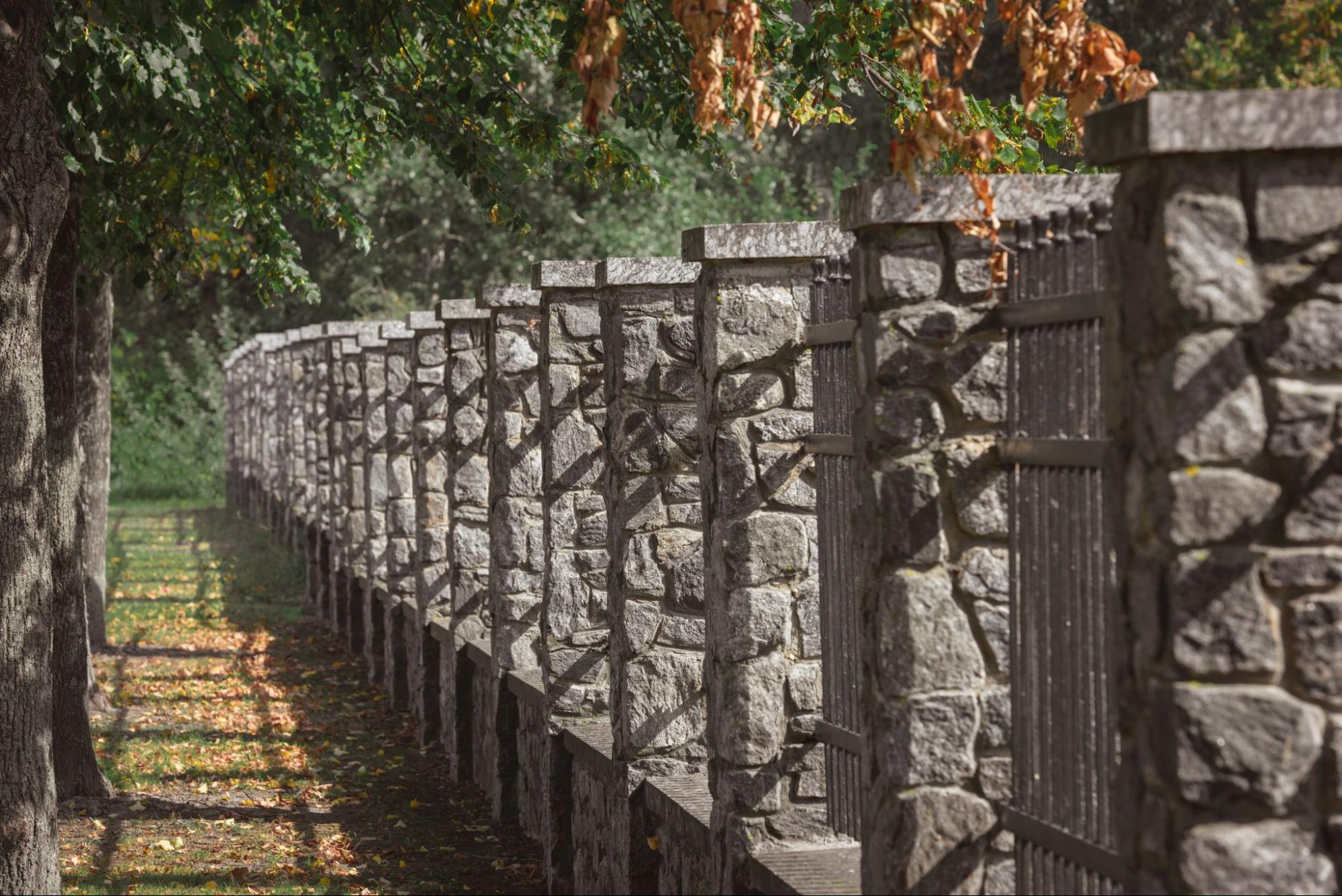
Eco-Friendly Fencing Options for Modern Homes
Sustainability has become a key part of modern living. Homeowners want fences that last and leave a small footprint. Recycled and renewable materials can meet these needs without sacrificing style. These fences blend function, conscience, and design.
Bamboo Fencing With Contemporary Framing
Bamboo grows fast and renews itself without chemicals. When cut and treated, it becomes a sturdy fence material with a natural look. Framing the bamboo with black steel or timber posts gives it a modern edge. It works well around patios, meditation spaces, or minimalist gardens. With proper sealing and care, it withstands the weather.
Recycled Material Fencing for Sustainability
Fences made from recycled plastics and wood blends are rising in popularity. They resemble real wood but won’t rot, splinter, or fade, making them a solid pick for homeowners who want green without the upkeep. Some options use old milk jugs and sawdust in their formula. Additionally, they come in several finishes to suit any modern home style.
Decorative Fencing That Enhances Modern Design
Fences aren’t just walls — they can be artwork. With modern design, forms don’t have to follow function; they can run side by side. Choosing a fence that matches the home’s aesthetic adds value and visual impact. It turns boundaries into design statements.
Laser-Cut Metal Fencing With Geometric Patterns
This style brings art to the edge of your yard. Flat metal panels are laser-cut with abstract or geometric designs. Homeowners can choose from premade patterns or custom work. Powder-coated finishes add durability and a wide range of colors. Additionally, pairing these panels with lighting creates stunning night visuals.
Gabion Wall Fencing for Raw Elegance
Fences aren’t just walls — they can be artwork. With modern design, forms don’t have to follow function; they can run side by side. Selecting a fence that complements the home’s aesthetic enhances its value and visual appeal. It turns boundaries into design statements.
Budget-Friendly Fencing for Modern Appeal
Not every stylish fence comes with a high price. Innovative materials and thoughtful design enable cost-effective solutions. Budget fencing can still align with your modern aesthetic. The trick is focusing on clean lines and simple materials.
Painted Picket or Pallet-Style Fencing
Forget the old white picket look. Today’s modern picket fences typically feature narrow boards and a horizontal layout. Reclaimed wood or pallets offer charm and eco-friendly savings. Paint them matte black, grey, or sage green for a contemporary touch. Additionally, this style works well for small spaces or garden borders.
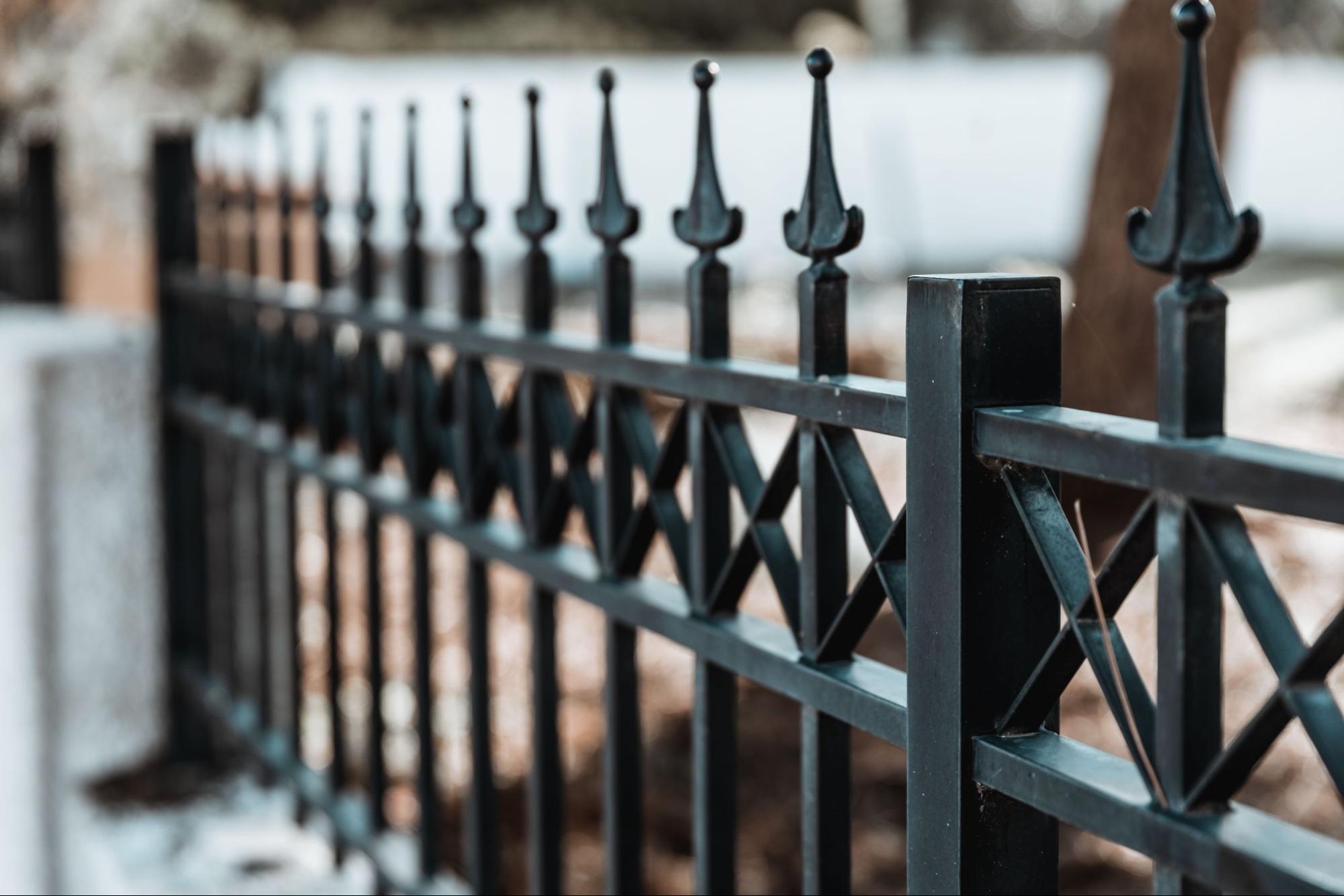
Vinyl Fencing With Modern Profiles
Vinyl has come a long way from bland panels. Now, you can find styles that mimic wood or come in modern neutrals. Vinyl is affordable, won’t peel or warp, and needs no upkeep. It’s a wise choice for rental homes or busy families. Similarly, its smooth finish complements most modern landscapes well.
Security-First Fencing for Peace of Mind
Safety matters, but it doesn’t have to look severe. Modern fencing can protect your space while fitting your home’s style. The best designs combine sturdy materials with a clean look. They guard your home and still feel like part of the design.
Steel or Iron Fencing With Clean Lines
Forget decorative swirls and scrolls. Today’s steel fences are all about straight lines and function. They’re hard to climb, strong enough to resist force, and long-lasting. When powder-coated in black or dark grey, they blend with modern homes. Additionally, they pair well with hedges or sleek lighting.
Privacy Walls With Integrated Technology
This solution combines modern fencing with smart home tech. These walls include motion-sensor lighting, surveillance cameras, or speaker systems. The materials can be wood, composite, or metal, styled to match the home. Tech components stay hidden or stylishly mounted. Similarly, these setups offer control and safety without looking industrial.
Climate-Resilient Fencing for Long-Term Durability
Modern homes are exposed to various weather conditions, depending on their location. What works in one climate can fail quickly in another. Durable fencing choices must consider factors such as wind, rain, heat, and soil. Ignoring the environment leads to repairs, replacements, or total collapse.
Heat-Resistant Fencing for Sun-Exposed Areas
Homes in desert or sunny climates need materials that won’t warp or fade. Wood fences can dry, crack, and lose color fast. Metal may overheat, but it lasts longer if appropriately coated. Composites with UV protection are ideal for heat, especially darker shades. Additionally, horizontal slats with spacing reduce trapped heat and allow ventilation.
Moisture-Resistant Fencing for Wet and Coastal Regions
Water damage becomes a significant concern in areas with frequent rainfall or coastal regions. Wood can rot and attract termites unless it’s treated and sealed often. Vinyl, composite, and galvanized steel all handle moisture well. Stainless steel or marine-grade aluminum is best suited for use near saltwater. Similarly, fencing with post caps and ground clearance reduces long-term damage.
Zoning-Compliant Fencing for Residential Boundaries
Before installing any modern fence, check your city or HOA rules. Zoning laws and neighborhood covenants can restrict the height, color, and materials used in construction. Some areas ban metal fences; others limit how close to sidewalks you can build. Following these guidelines helps avoid fines and saves time.
Fencing Height and Setback Rules in Urban Areas
Cities often limit front-yard fencing to three or four feet. Backyard fences can go higher, usually up to six or eight feet. Setback rules prevent fences from being too close to sidewalks or intersections. These laws exist for safety and sightlines, especially near driveways or corners. Additionally, understanding these rules early helps design with confidence.
HOA-Friendly Fencing for Regulated Neighborhoods
In HOA communities, homeowners must follow architectural review guidelines. These rules often dictate color, design, and even the type of fence material. If styled correctly, composite or vinyl fences are frequently accepted for modern homes. Stick to neutral colors, such as black, brown, or white, for better approval odds. Similarly, consulting your HOA board before building saves time and reduces the need for revisions.
Sound-Blocking Fencing for Noise-Sensitive Homes
Noise can ruin the peace of even the most beautiful yard. Living near roads, parks, or schools comes with distractions. Sound-reducing fencing turns your yard into a quiet retreat. With the right design and material, you won’t hear the world outside.
Dense Panel Fencing for Maximum Noise Reduction
Solid-panel fencing creates a strong barrier against sound—materials like composite, concrete, or treated woodwork well. Gaps or holes in the structure reduce effectiveness, so keep panels tight. Taller fences block more sound, especially close to the source. Additionally, double-layer panels with air gaps offer better acoustic results.
Natural Sound-Dampening Fencing With Green Elements
Landscaping can boost your fence’s noise control. Adding tall shrubs, vines, or bamboo against the fence absorbs extra sound. It also softens the look and adds a touch of privacy. Combining wood panels and living plants creates a warmer, more inviting design feel. Similarly, it supports sustainability and creates a more natural buffer.
Upgrade Your Space With Purposeful Fencing Choices
A fence isn’t just an edge; it’s a decision about how you live. It defines how your home speaks to the world and protects what matters inside. The proper fencing doesn’t just blend in; it sharpens your home’s identity. Choose materials that stand up, styles that stand out, and functions that serve your daily life. If you’re building a modern home, start thinking of the fence not as a finish but as a feature.
Explore more ways to define your space. Head to the HB Fence, Decking & Construction blog for fresh insights and practical fencing advice.

